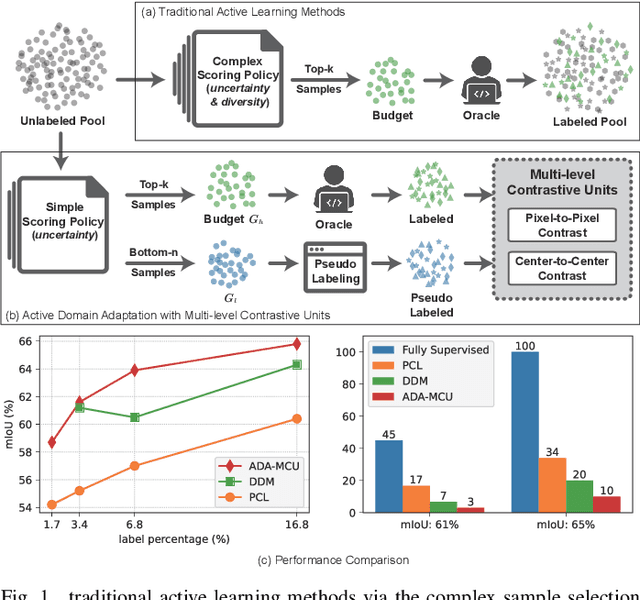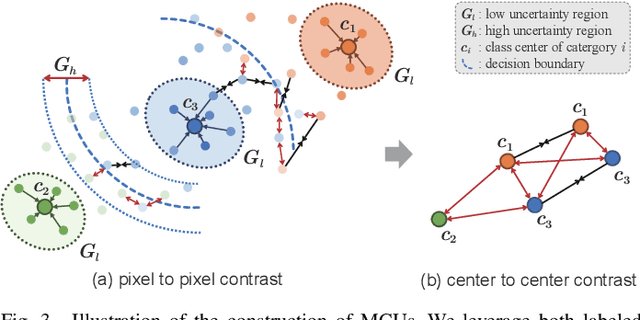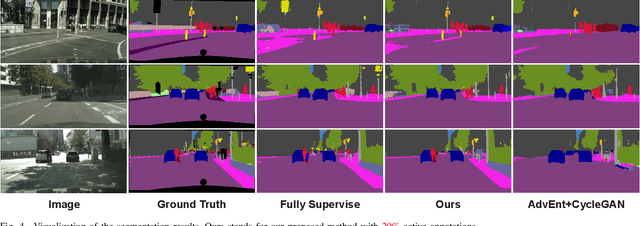Active Domain Adaptation with Multi-level Contrastive Units for Semantic Segmentation
Paper and Code
May 25, 2022



To further reduce the cost of semi-supervised domain adaptation (SSDA) labeling, a more effective way is to use active learning (AL) to annotate a selected subset with specific properties. However, domain adaptation tasks are always addressed in two interactive aspects: domain transfer and the enhancement of discrimination, which requires the selected data to be both uncertain under the model and diverse in feature space. Contrary to active learning in classification tasks, it is usually challenging to select pixels that contain both the above properties in segmentation tasks, leading to the complex design of pixel selection strategy. To address such an issue, we propose a novel Active Domain Adaptation scheme with Multi-level Contrastive Units (ADA-MCU) for semantic image segmentation. A simple pixel selection strategy followed with the construction of multi-level contrastive units is introduced to optimize the model for both domain adaptation and active supervised learning. In practice, MCUs are constructed from intra-image, cross-image, and cross-domain levels by using both labeled and unlabeled pixels. At each level, we define contrastive losses from center-to-center and pixel-to-pixel manners, with the aim of jointly aligning the category centers and reducing outliers near the decision boundaries. In addition, we also introduce a categories correlation matrix to implicitly describe the relationship between categories, which are used to adjust the weights of the losses for MCUs. Extensive experimental results on standard benchmarks show that the proposed method achieves competitive performance against state-of-the-art SSDA methods with 50% fewer labeled pixels and significantly outperforms state-of-the-art with a large margin by using the same level of annotation cost.
 Add to Chrome
Add to Chrome Add to Firefox
Add to Firefox Add to Edge
Add to Edge